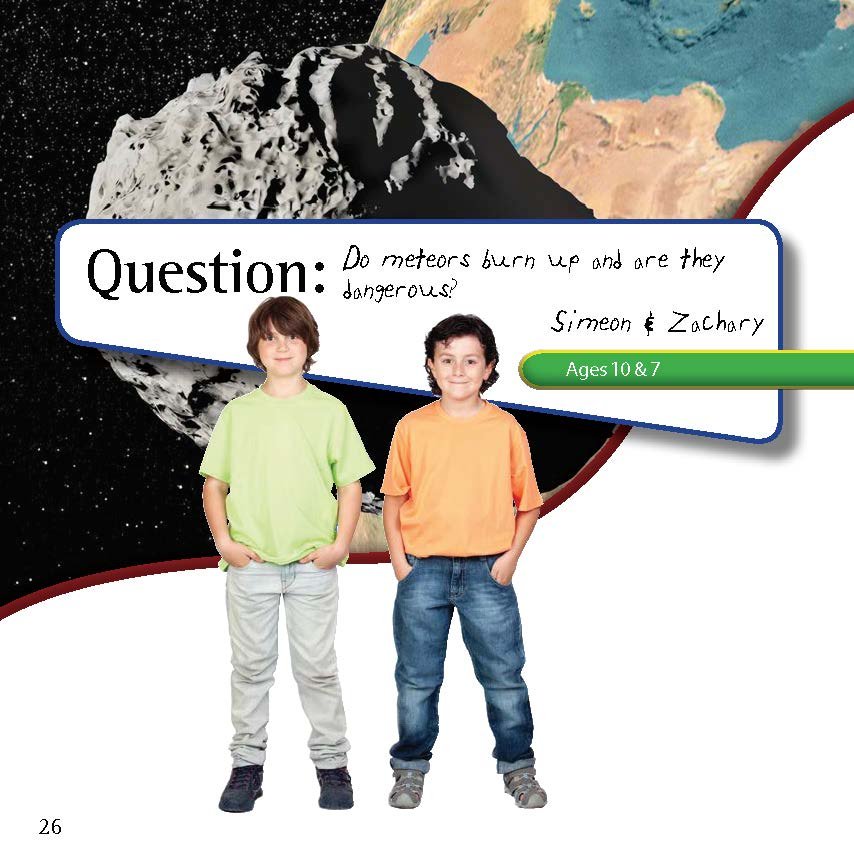Do Meteors Burn Up And Are They Dangerous?
Chapter 12
on August 21, 2017
Answer:
Do not be overly wicked, nor be foolish: why should you die before your time? (Ecclesiastes 7:17)

Ecclesiastes 3:1
Romans 8:22
Meteors are made from meteoroids and sometimes asteroids, which are bigger. Meteoroids are rocky and/or icy fragments (depending on comet remnants) that are smaller than asteroids and are found in many parts of space. Meteoroids, when they fall into earth’s atmosphere, become “meteors.” If some parts of a meteor don’t burn up (due to the heated compression of the air in front of the meteor), those pieces are called “meteorites.” Can they be dangerous? Yes, they can, but most are not. Most meteors typically burn up, with nothing left of them to fall out of the sky. It’s actually rather enjoyable to watch as the meteors burn up—we often call the flashes of light across the night sky “falling stars” or “shooting stars,” even though they are not really stars. But if the pieces are large and do not burn up all the way, then they can hit the ground really fast, sending a big shockwave! This can do serious damage.
A meteor that was about 50 feet in diameter (15 meters) hit the city of Chelyabinsk, Russia, on February 15, 2013. Much of the meteor burned up, but the rest of it shattered above the city and caused a lot of damage with the debris and shockwave. This rare event injured about 1,500 people.
The Answers Book for Kids: Volume 5
Have questions about space and astronomy? Find answers to 20 common questions asked by kids in this book!
Browse Kids Book- © 2024 Answers in Genesis
- Privacy Policy
- Contact
- About

